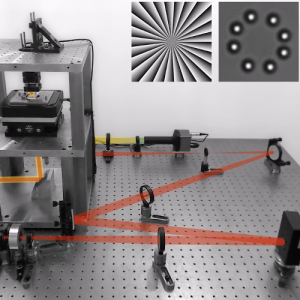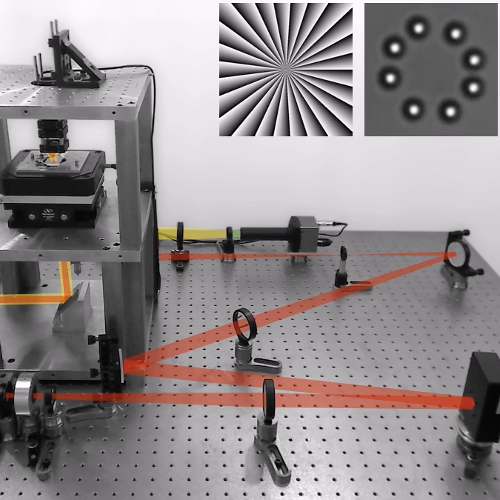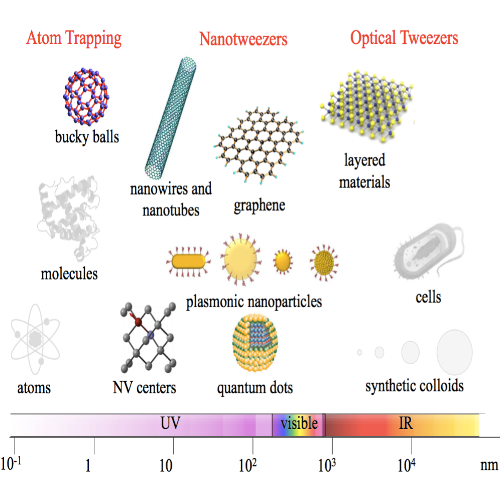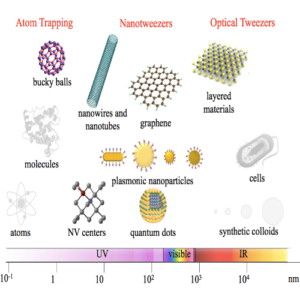
A step-by-step guide to the realisation of advanced optical tweezers
Giuseppe Pesce, Giorgio Volpe, Onofrio M. Maragò, Philip H. Jones, Sylvain Gigan, Antonio Sasso & Giovanni Volpe
Journal of the Optical Society of America B 32(5), B84—B98 (2015)
DOI: 10.1364/JOSAB.32.000B84
arXiv: 1501.07894
Since the pioneering work of Arthur Ashkin, optical tweezers (OT) have become an indispensable tool for contactless manipulation of micro- and nanoparticles. Nowadays OT are employed in a myriad of applications demonstrating their importance. While the basic principle of OT is the use of a strongly focused laser beam to trap and manipulate particles, more complex experimental setups are required to perform novel and challenging experiments. With this article, we provide a detailed step-by-step guide for the construction of advanced optical manipulation systems. First, we explain how to build a single-beam OT on a homemade micro- scope and how to calibrate it. Improving on this design, we realize a holographic OT, which can manipulate independently multiple particles and generate more sophisticated wavefronts such as Laguerre–Gaussian beams. Finally, we explain how to implement a speckle OT, which permits one to employ random speckle light fields for deterministic optical manipulation.


